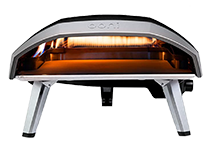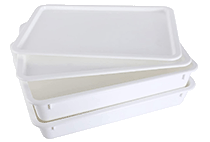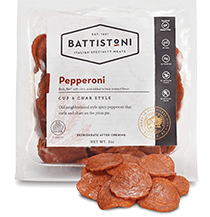Pizza is the perfect combination of tangy tomato sauce, melted cheese, and a crispy, chewy crust. It all comes together in the perfect food. But the most important part and the most difficult to truly master is the crust. Of course, the best crust comes down to preference.
Some pizza lovers prefer a Chicago deep dish crust, while others prefer a thin crispy cracker-like St. Louis-style crust. The perfect combination of a crisp, chewy crumb comes down to science and understanding the basics of pizza dough manipulation.
It’s taken us a long time to master this pizza dough management. But we’re pretty much expert dough scientists now!
Key Takeaways:
- Making a good pizza dough is a science that involves key components such as flour, water, yeast, time, and temperature, and understanding the variables of each.
- The type of flour used and the hydration level of the dough play a crucial role in the texture and flavor of the crust, and adding fat to the mix can also affect the final outcome.
- Professional pizzaiolos often use pre-fermentation methods like biga and poolish to create a more complex flavor and texture in the crust, and different pizza styles have different hydration levels that affect the final product.
Table of Contents
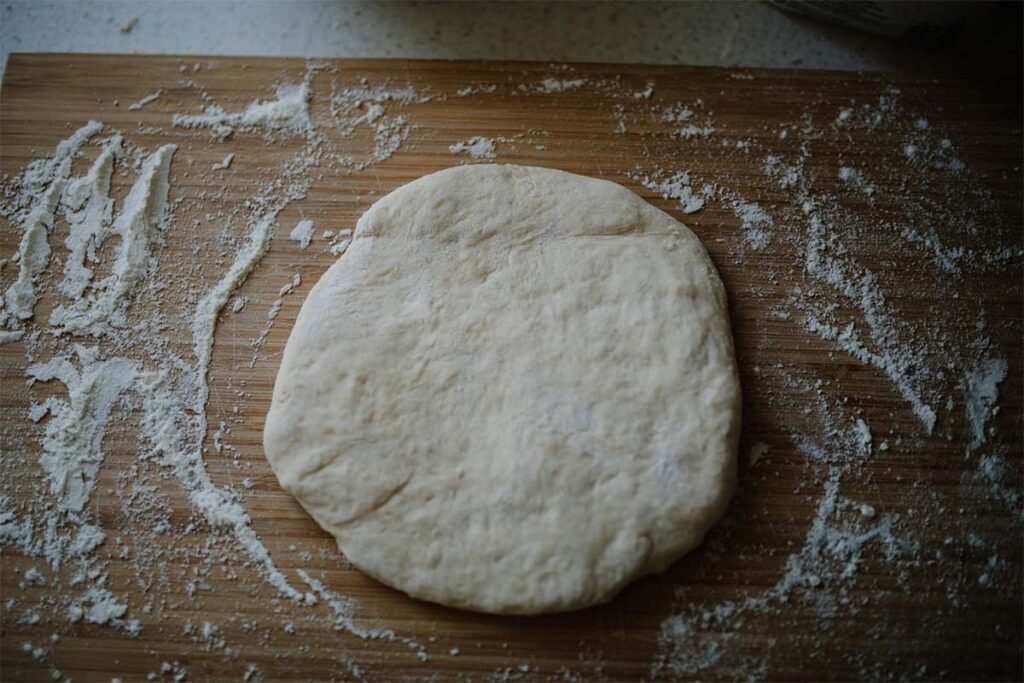
Making a good pizza dough is a science where the key components are flour, water, yeast, time, and temperature. While it seems like a simple equation, it’s more complex than that because there are variables to all of these components.
From different types of flours to water temperature and amount referred to as hydration, types of yeast, fermenting times and whether you choose a cold ferment or a counter ferment, room temperature, and the amount of time the dough ferments.
Pizza Dough Manipulation: Elements of a Good Crust
Ok, get ready for some science. Let’s talk about the science of mixing flour and water. When the two are mixed, the proteins form gluten. Then when you add salt and the dough gets kneaded, the gluten gets stronger. Then when yeast is added, it eats the sugars creating those big bubbles.
The whole fermented shebang is put in the oven, and the sugars on the crust turn golden, and the gluten bakes, making a strong crust, strong enough to hold all of your favorite pizza toppings. So it all comes down to the gluten.
That doesn’t mean you can’t make gluten-free pizza because you can, but it has a different texture than pizza crust made with gluten. Totally different, actually.
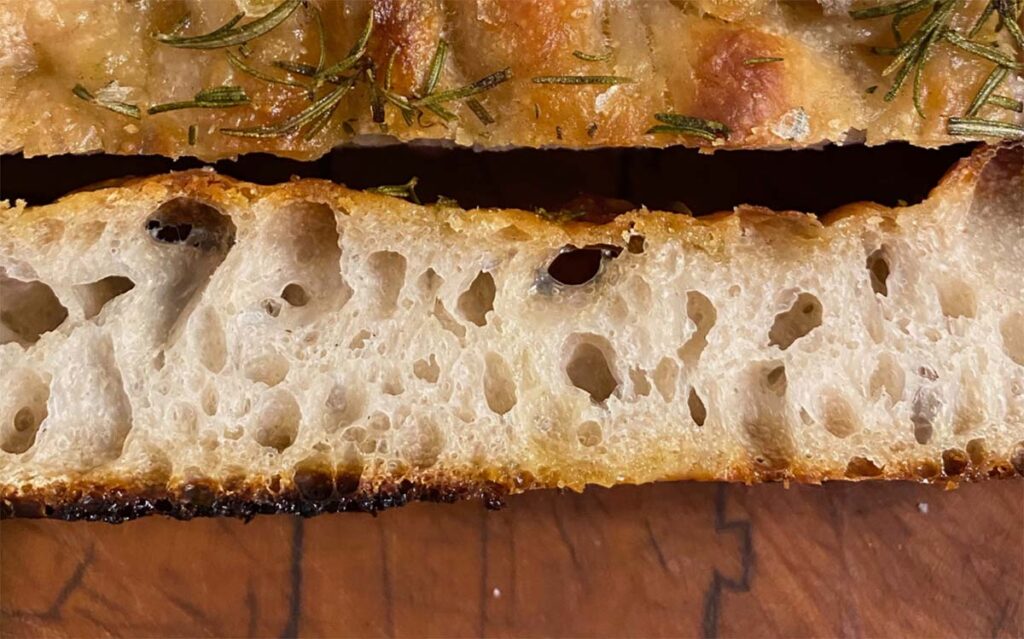
Flour
The type of flour you use plays an important role in how the crust turns out. The grain affects the stretch of the flour. In Neapolitan-style pizza, the best flour is 00 flour which is fine like baby powder and high in gluten, making it stretchy.
Bread flour which is also high in gluten, is the most common type of flour for home pizzaiolos to use. While all-purpose is not ideal, you can still get a decent pizza crust with all-purpose flour, but you may need to increase ferment time to give it enough time to build and get stretchy.
Hydration
Your flour isn’t anything without some water. When we talk about dough hydration, it means how wet the dough is or how hydrated it is. You can use a pizza dough calculator to determine this or measure out the water to get the right flour-to-water ratio.
A pizza dough made with high gluten flour and high hydration baked quickly at a high temperature will form a nice springy crust. While a low-hydration dough that is cooked at a lower temperature will have a dry texture and won’t have that nice springiness.
The main problem that home pizzaiolos have with a highly hydrated dough is that it is sticky and messy. It takes time and practice to get a feel for the dough and learn how to manipulate it without drying it out. It really is a balancing act getting the right flour mix and the perfect hydration point.
Proteins
The two proteins, glutenin, and gliadin, bind together and form gluten. This connection is how the gases remain in the dough and how stretchy the dough becomes. The way the gluten stretches is referred to as extensibility.
Biga and Poolish
If these two words sound like gibberish, that’s okay. These two aren’t talked about much, but they are two pre-fermentation methods, sometimes referred to as starters or sponges, that certified pizzaiolos work with.
Biga is a preferment that is used in Italian baking. Poolish is a fluid yeast cultured dough commonly used in the French style of baking. These additions to pizza dough add a more complex, nuanced flavor and texture to the crust. Biga is responsible for a nice airy light crust with a slightly nutty flavor.
While poolish creates a crispier chewy buttery crust with smaller holes. True pizzaiolos use both together or separately depending on what their end goal is for the type of crust.
Adding Fat to the Mix
Beyond flour, water, yeast (or brewers yeast), pizza dough can have other things mixed in that affect the dough and final outcome. And that is fat. Adding fat to the dough can replace some of the water while still keeping hydration levels the same.
Fat in the form of oil with get soaked in and create that crisp on the outside and chewy on the inside with tiny holes, while using fat in the form of lard or butter makes the crust flaky like a croissant.
Oil
Pan pizzas, like deep dishes and even focaccia, have high hydration and are baked in an oiled pan. The oil is soaked into the crust, creating that spongy style of chewy crust with a slight crisp on the outside.
Lard and Butter
Some pizzerias add either lard or butter to the dough in the French technique of folding. Similar to the way you add cold chunks of butter to make a sweet pie crust. The fat is responsible for that flaky crust.
Pizza Styles and Hydration
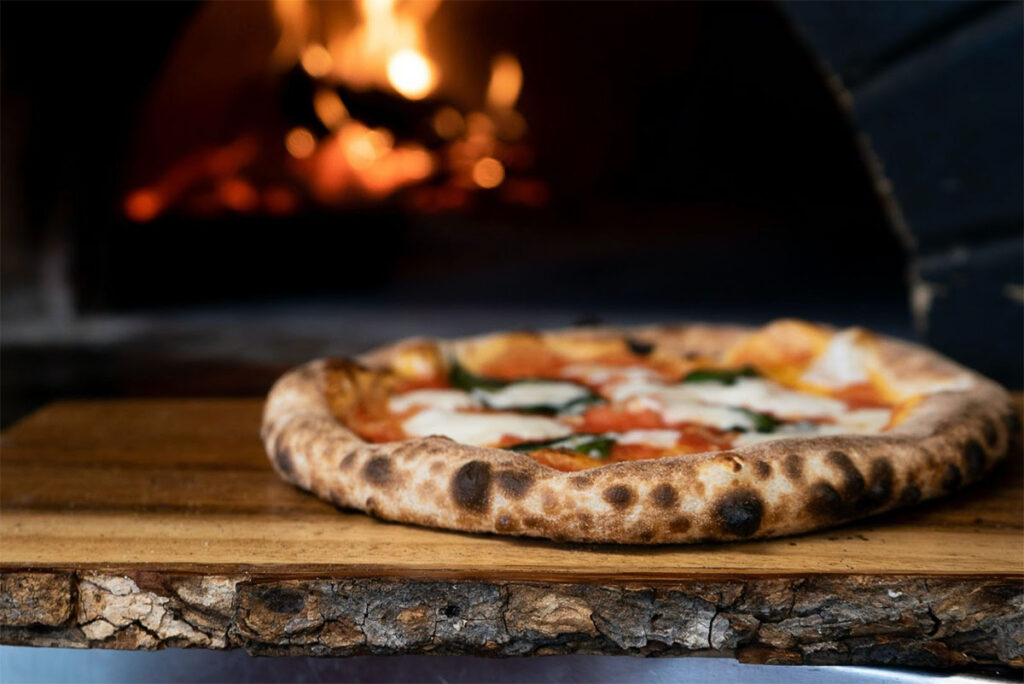
- Focaccia 55%
- Neapolitan 60-65%
- Sicilian 60%
- Chicago 60%
- New York 65%
- Detroit 70%
High hydration is anything about 75%, and professional pizzaiolos go up to 80 and even 90%. For home pizzaiolos, this is going to be difficult to work with, and unless you have a pizza oven that can handle a highly hydrated dough, it’s not going to be worth the trouble.
Do you remember the scene in Chef’s Table Pizza edition where the pizzaiolo is elbow-deep in a vat of dough? We are guessing that was a dough with high hydration.
Now that you know some basics of pizza dough manipulation, here is a recipe for our favorite high-hydration dough at 75%.
- 4 cups High protein (14%) Bread flour
- 3 cups warm water
- 1 ½ teaspoon of active dry yeast
- 1 teaspoon sea salt
- Pinch of sugar
Start by activating yeast with half a cup of the three cups of water, the yeast, and a pinch of sugar. Wait about five to ten minutes for the yeast to activate. Mix ingredients together and knead til forms a smooth ball. Cover and let rise for the first fermentation for two hours.
Next, degas the dough by punching it down. Divide dough into two balls. Place in a proofing box or airtight container and refrigerate for between 8-24 hours. Remove an hour before making pizza.
Frequently Asked Questions
Can I make a good pizza crust with all-purpose flour?
Yes, you can still make a decent pizza crust with all-purpose flour, but you may need to increase ferment time to give it enough time to build and get stretchy.
What is hydration in pizza dough?
Hydration in pizza dough refers to how wet the dough is or how hydrated it is. A pizza dough made with high gluten flour and high hydration baked quickly at a high temperature will form a nice springy crust, while a low-hydration dough that is cooked at a lower temperature will have a dry texture and won’t have that nice springiness.
What is the best flour to use for making pizza dough?
The best flour for making pizza dough is 00 flour, which is fine like baby powder and high in gluten, making it stretchy. Bread flour, which is also high in gluten, is the most common type of flour for home pizzaiolos to use.
What is the role of fat in pizza dough?
Adding fat to the dough can replace some of the water while still keeping hydration levels the same. Oil can create that crisp on the outside and chewy on the inside with tiny holes, while using fat in the form of lard or butter makes the crust flaky like a croissant.
What is the difference between biga and poolish?
Biga and poolish are two pre-fermentation methods, sometimes referred to as starters or sponges, that certified pizzaiolos work with. Biga is a preferment that is used in Italian baking and is responsible for a nice airy light crust with a slightly nutty flavor. Poolish creates a crispier chewy buttery crust with smaller holes. True pizzaiolos use both together or separately depending on what their end goal is for the type of crust.
Have you worked with a high-hydration pizza dough before? What’s your understanding of pizza dough manipulation? We’re always hoping to learn more on our homemade pizza journey.


